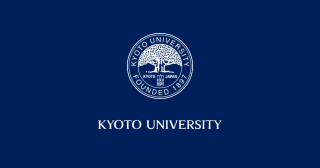The 2nd Kyoto-Bordeaux Symposium was held in Kyoto on 22–23 May in collaboration between Kyoto University and the University of Bordeaux.
Building on the success of the inaugural Bordeaux-Kyoto symposium, which was held in Bordeaux on 5–6 May 2014, the symposium sought to provide researchers from the two universities with further opportunities to foster new friendships and strengthen existing partnerships. The symposium was attended by over 120 researchers working in the symposium's eight academic fields of focus and other delegates from the two universities.
The symposium is one of several such events held in accordance with Kyoto University's international strategy, The 2× by 2020 Initiative, which seeks to contribute to the development of world-class knowledge by promoting internationalization and a collaborative approach to research and education. The organization of regular international symposia held in Japan and overseas is one provision of the strategy.
The first day of the symposium began at the university's newly built Center of Innovation with opening speeches by Dr Juichi Yamagiwa, president of Kyoto University, and Prof Manuel Tunon de Lara, president of the University of Bordeaux. The speeches were followed by congratulatory addresses by the symposium's three honored guests, Mr Kouhei Okawa from the Japanese Ministry of Education, Culture, Sports, Science and Technology (MEXT), Ms Claire Thuaudet, cultural counselor from the French Embassy in Japan, and Dr Philippe Codognet, director of the French National Center for Scientific Research (CNRS) Office for North-Asia. The presidents then signed a memorandum of understanding for student exchange, which will facilitate a more active exchange of students between the two universities.
After the signing ceremony, President Yamagiwa delivered a keynote speech titled Evolution of Human Sociality: What We Can Learn from Gorillas . The President discussed the evolution of human social structures and ecosocial behaviors based on his life-long observation of gorillas in Africa. Prof Stéphanie Debett of the University of Bordeaux, then gave a speech introducing the latest genomic and neurological studies on the causes behind small artery diseases.
In the symposium's parallel sessions, held in the afternoon of the first day and the morning of the second day, researchers from the two universities discussed issues ranging from urban governance to medical imaging. The researchers shared their research findings and explored possibilities for collaboration.
In the afternoon, the participants divided into two groups for two distinctly different cultural excursions. One group visited Ninna-ji Temple, a registered UNESCO World Cultural Heritage site, where they had a chance to see historical buildings and traditional fusuma-e sliding door paintings. The second group enjoyed a guided tour of the Gekkeikan Okura Sake Brewery in Fushimi, where they visited its museum and learned about traditional methods of brewing sake.
After the excursions, the results of the two days' research sessions were presented at a wrap-up session, during which the representatives of the chemical and medical sessions presented concrete plans for future research and education collaboration, including the establishment of an international laboratory and the organization of a series of guest lectures at both universities. Following the wrap-up session, the symposium was brought to a close with a speech by Prof Kayo Inaba, Kyoto University's executive vice-president for gender equality, international affairs, and public relations. In her speech, Executive Vice-President Inaba confirmed the success of the symposium, and expressed her best wishes for the further development of cooperation between the two universities.
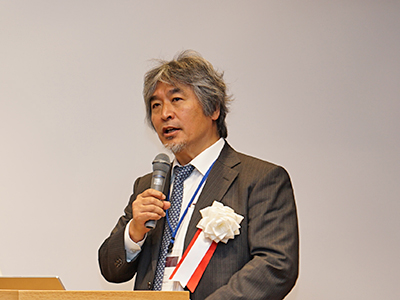
Keynote speech by President Yamagiwa
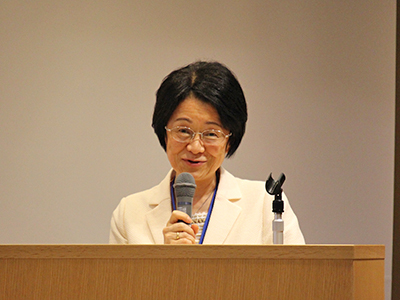
Closing address by Executive Vice-President Inaba
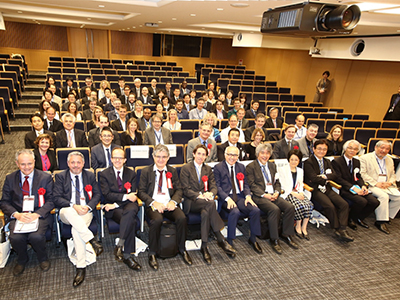
Group photo
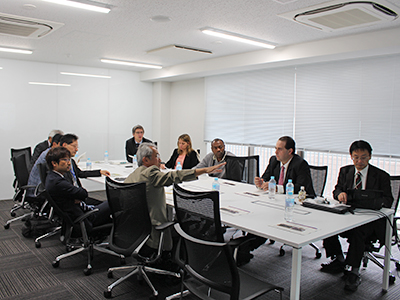
Nutrition and Food Science Session
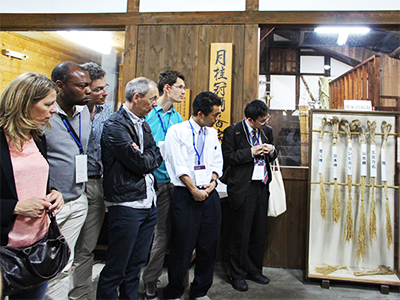
A guided tour at the Gekkeikan Okura Sake Brewery
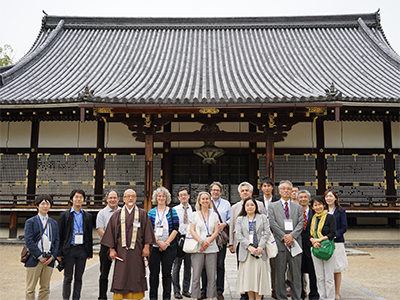
Science for Cultural Heritage visiting Ninna-ji Temple





